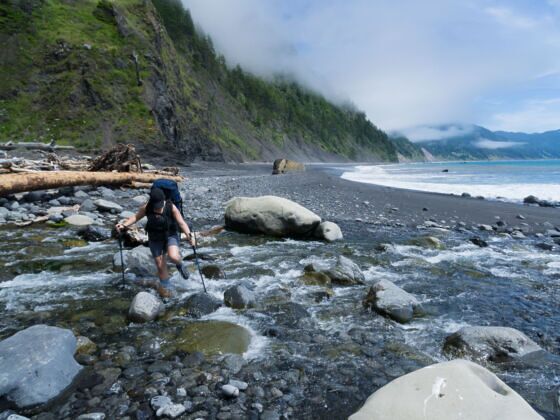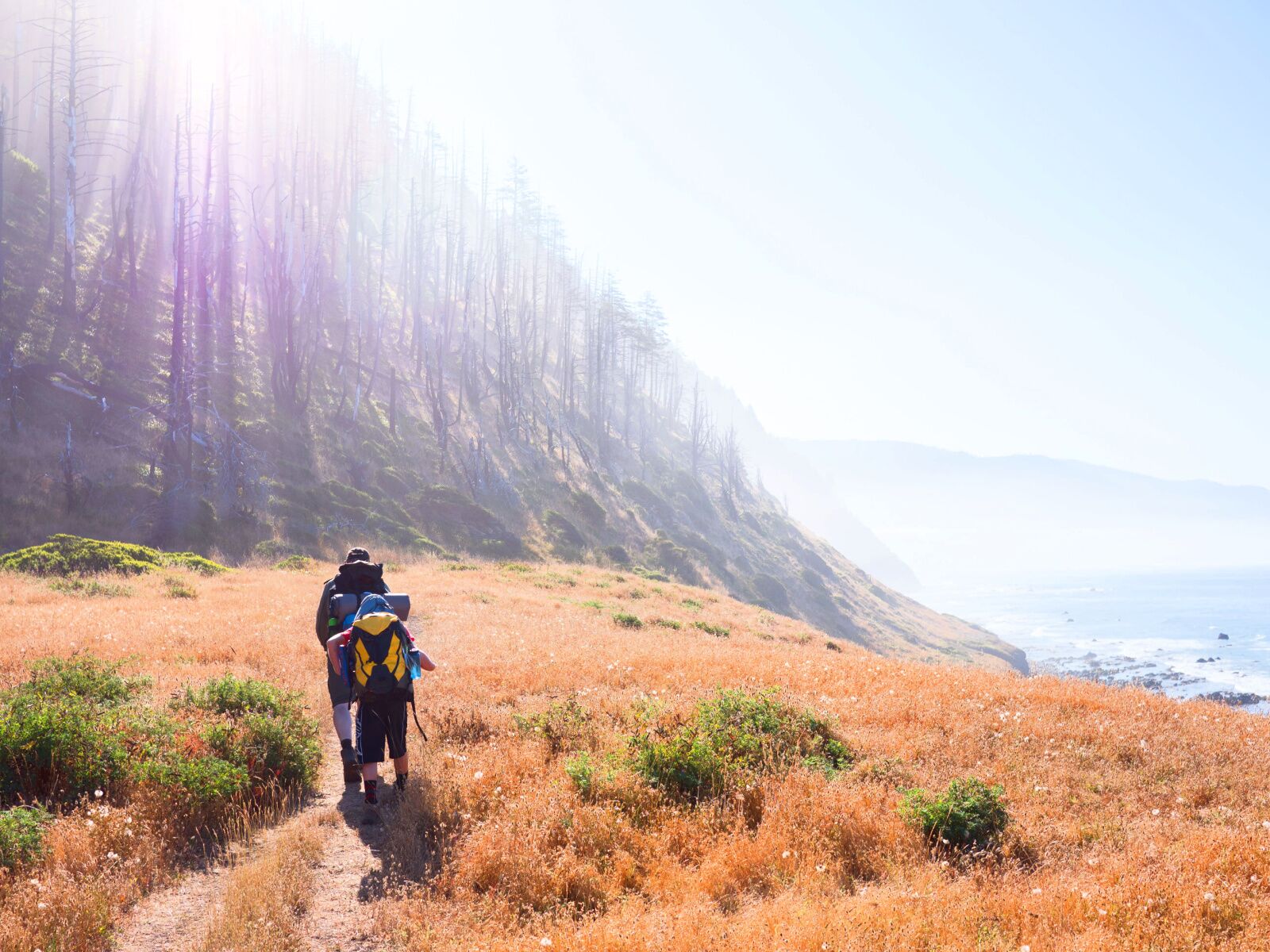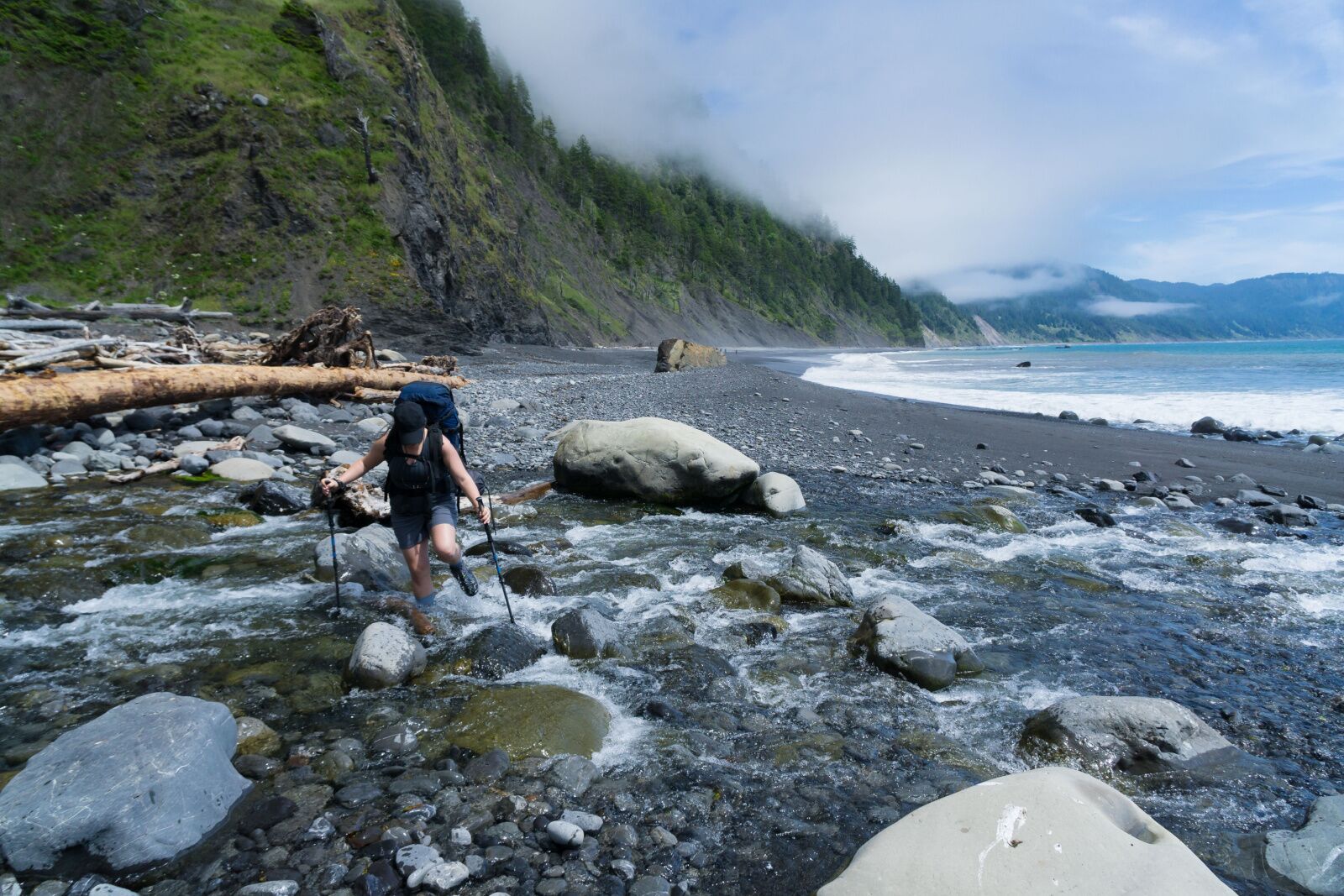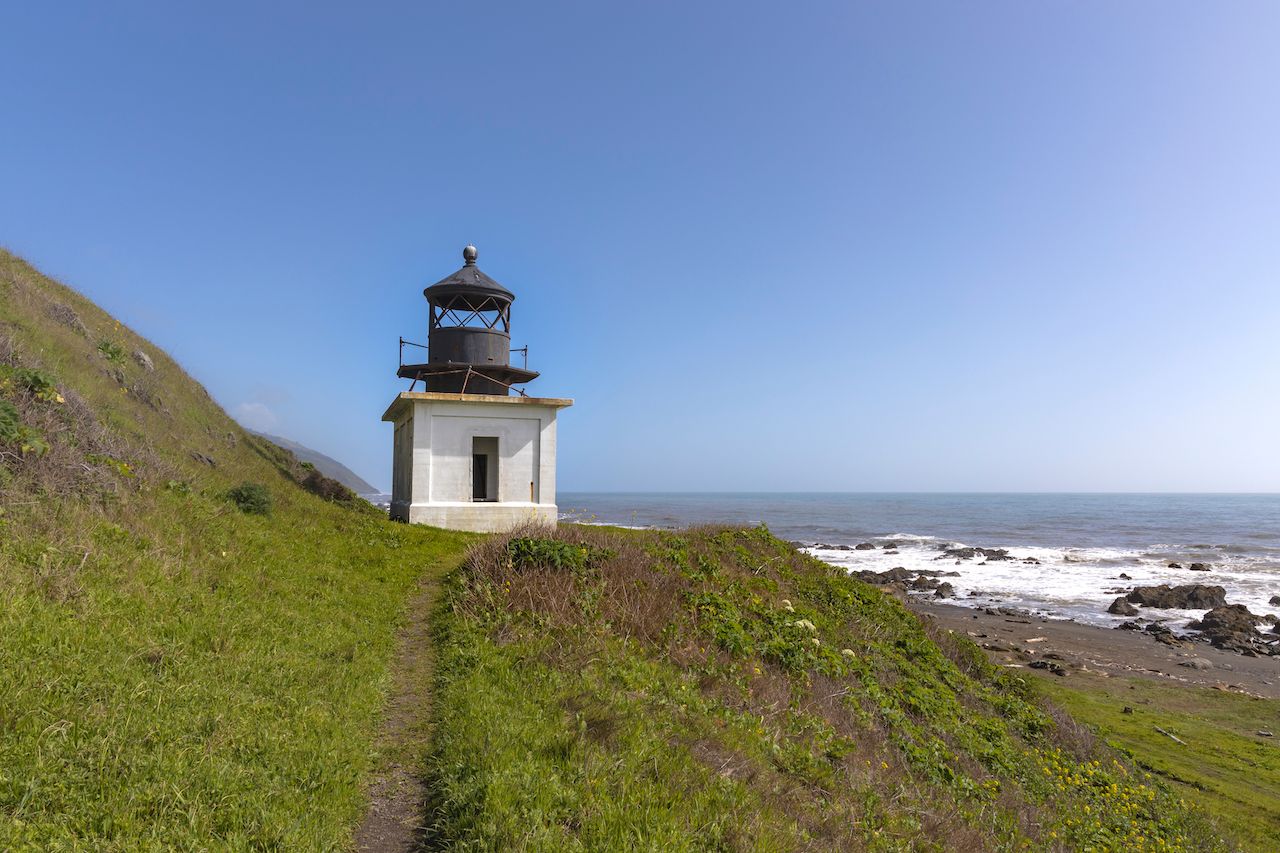Just a half-day’s trip north of San Francisco (4.5 hours, to be exact) is where a stretch of California coastline bulges west. The highway steers inland, leaving only rugged coastal terrain along the shore. As a result, there’s little development and not very many ways to explore the coastline — except for on foot.
That area of northern California is known as The Lost Coast and is home to the gorgeous Lost Coast Trail. It beckons ambitious and intrepid hikers in search of unforgettable scenery and wilderness experiences that differ from most of what you’ll find along the Pacific Coast Highway. This isn’t Big Sur, Mendocino, or Santa Barbara; you won’t be just a stone’s throw from lux hotels and high-end wineries. To hike the one-of-a-kind Lost Coast trail, you’ll have to venture into treacherous territory that roadbuilders thought better to let be. And be totally cool with getting wet.





